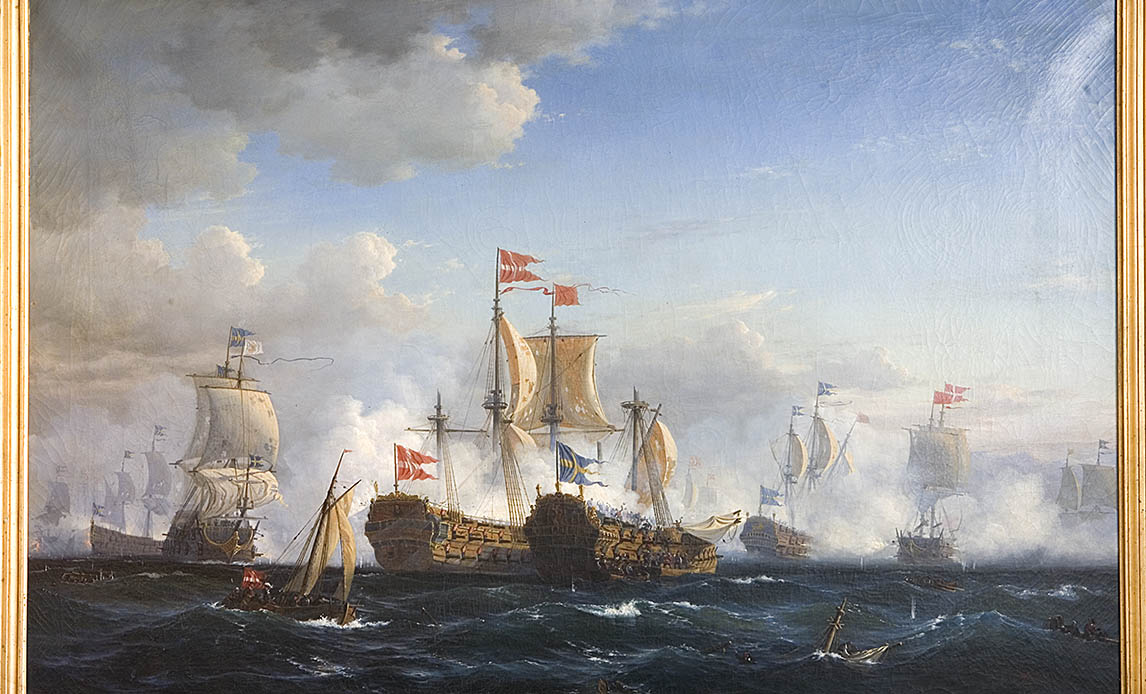News
History of the Ministry
Denmark has a long tradition for management and control of the armed forces. The organisation and denomination have changed several times over the years.

The Battle of Køge Bay 1 July 1677. A Danish naval force of 27 liners and frigates etc. under Admiral Niels Juel beats a Swedish fleet of 30 liners and frigates etc. Painting by Viggo Fauerholt in 1856.
In the 13th century the king’s commander - called the constable – as the first one was assigned with a proper supervision of the army and military affairs. The king was still supreme war lord, though, so he decided exclusively whether a new constable was to be appointed at all. This is why the job was often vacant.
In 1536 it was decided that the king had an obligation to appoint a supervisor for the army organisation. However, with the introduction of absolute monarchy, the system was abolished in 1660.
War College
Although there was absolute monarchy, the king did not personally take care of all administration of the army organisation. In 1660, Frederik III established a war college. This council was meant to manage both practical and administrative matters concerning the army – in times of war as well as peace. An equivalent council, the Admiralty, had already in 1655 been established to manage the navy.
Change of name
The Admiralty kept its name throughout the period of absolute monarchy. The War College changed its name a few times. First time to the War Chancellery (1879), later to the Generalty and Commissariat College. Not until the abolishment of absolute monarchy, however, was the administration system changed radically.
Denmark’s first minister for the navy
Already on the day after the collapse of absolute monarchy, 21 March 1848, King Frederik VII appointed A.F. Tscherning to be Denmark's first minister for war. On 6 April the appointment of C.C. Zarthmann as Denmark's first minister for the navy followed.
The Ministry for War replaced the Generalty and Commissariat College on 25 March 1848, whereas the Ministry for the Navy replaced the Admiralty on 21 April 1948.
New administrative system
With the change of names the administrative system changed, too. With professional support from their government officials, the ministers were now responsible for the armed forces.
A minister was the head of each ministry. In the beginning they would always come from the military ranks and pertain to the services administrated by their ministry. The head official would also hold a military rank.
In 1905 the Ministries of War and the Navy were placed under one common minister of defence. With a few exceptions, all ministers of defence have since been civilian politicians. There continued to be two service ministries, and the positions as head officials were still filled by officers from the army and the navy.
In 1950, as part of a reorganisation after World War II, the Ministries of War and the Navy were joined. The military positions as head officials were discontinued and replaced by a civilian permanent secretary, referring directly to the minister of defence. This construction still applies today.